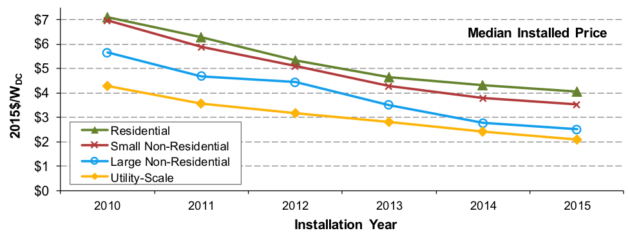
Solar Changes
Solar energy certainly has come a long way in being a reliable source of energy in its own right. Going from being a novelty resource tapped by climate change advocates to increasingly being used by individuals, cities, and even whole countries.
Indeed, more and more countries are joining the solar bandwagon. The biggest player around is China, who has even thought up a $50 trillion global grid of renewable energy supplying all countries. India sees itself with a 100 GW solar power capacity by 2022.
In fact cities and countries have had their whole grids powered by solar or renewables for periods of time. Costa Rica ran 285 days last year on 100% renewable energy. Cities like Addis Ababa, Ethiopia; Reykjavik, Iceland; and Curitiba, Brazil have already reached the 100% renewable energy goal, and much of that comes from solar power.
Sunny Side Up
So what’s fueling the increasing adoption of solar? Aside from being one of the preeminent renewable energy sources (others being wind, geothermal, and biofuels) much research and development has been focused on solar power.
In a nutshell, solar modules and their connected technologies are becoming better and more efficient at generating and storing energy. Even the traditional argument against solar, that it doesn’t run at night, becomes invalidated by concentrated solar power and better battery technologies.

All this has led to a general decline in the cost of solar power. In 2015, the installed cost of solar in the US has dropped 5% in small-scale solar panels and 12% in utility-scale solar farms. Chile has seen solar electricity be sold at $29.10 a megawatt-hour, nearly half of electricity from coal.
With the increasing uncertainty in the oil we suck from the ground, its time we start looking to the heavens for our energy needs.